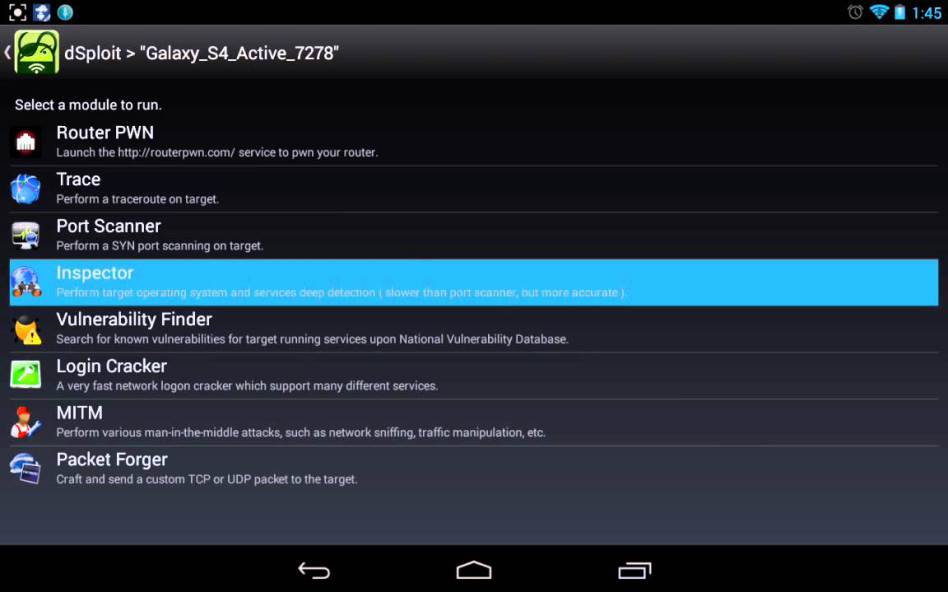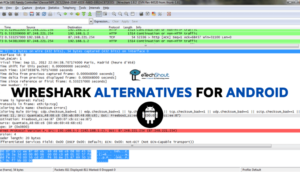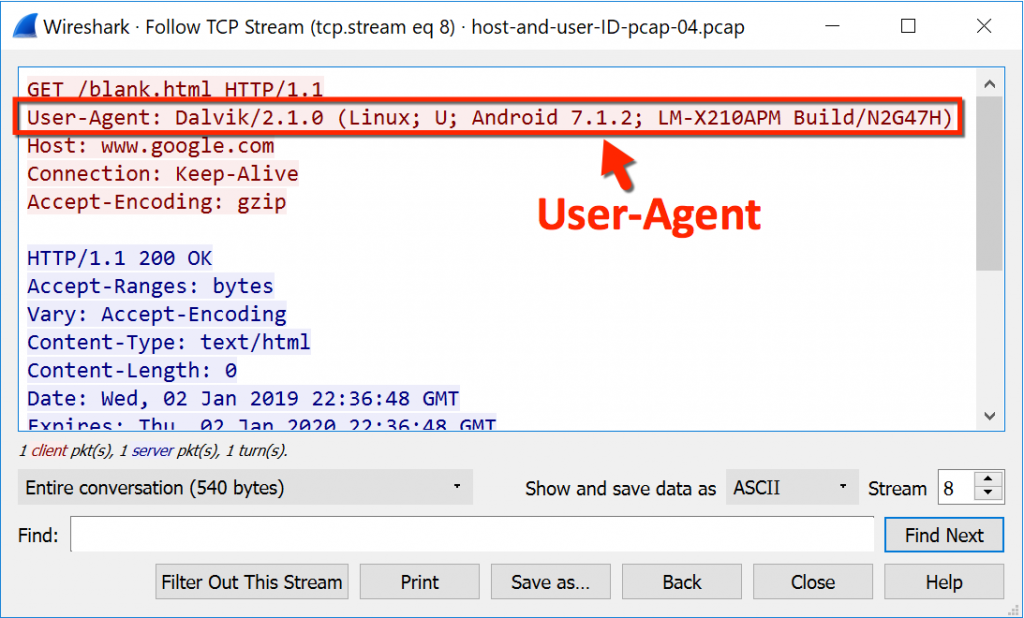

- #Wireshark for android how to#
- #Wireshark for android full#
- #Wireshark for android android#
- #Wireshark for android Pc#
- #Wireshark for android windows#
This cap is from a Windows host in the following AD environment: Go to the frame details section and expand lines as shown in Figure 13. For Windows hosts in an Active Directory (AD) environment, we can find user account names in from Kerberos traffic.

(Source: However, for those lucky enough to find HTTP web-browsing traffic during their investigation, this method can provide more information about a host. Select one of the frames that shows DHCP Request in the info column. Note : With Wireshark 3.0, you must use the search term DHCP instead of boot. Open the cap in Wireshark and filter on boot pas shown in Figure 1.
#Wireshark for android full#
If you have access to full packet capture of your network traffic, a cap retrieved on an internal IP address should reveal an associated MAC address and hostname.ĭHCP traffic can help identify hosts for almost any type of computer connected to your network. In most cases, alerts for suspicious activity are based on IP addresses.
#Wireshark for android how to#
This tutorial offers tips on how to gather that cap data using Wireshark, the widely used network protocol analysis tool. When a host is infected or otherwise compromised, security professionals need to quickly review packet captures (caps) of suspicious network traffic to identify affected hosts and users. Wireshark (1), shark(1), edit cap(1), cap(3), cap- filter (7) or pump(8) if it doesn't exist. (Source: Filtering with “IP.DST” selects only those IP packets that satisfy the rule.

It is easy to think of the 'né' and 'EQ' operators as having an implicit “exists” modifier when dealing with multiply-recurring fields. Similarly, filtering for all WSP GET and extended GET methods is achieved with: Remember that whenever a protocol or field name occurs in an expression, the “exists” operator is implicitly called.Ī special caveat must be given regarding fields that occur more than once per packet. The bitwise AND operation allows testing to see if one or more bits are set. If a field is a text string or a byte array, it can be expressed in whichever way is most convenient. A field may be checked for matches against a set of values simply with the membership operator. The “frame” protocol can be useful, encompassing all the data captured by Wireshark or Shark. IPv4 addresses can be represented in either dotted decimal notation or by using the hostname: IPv4 addresses can be compared with the same logical relations as numbers: EQ, né, gt, GE, Lt, and LE.ĬDR notation can also be used with hostnames, as in this example of finding IP addresses on the same Class C network as 'sneeze': The CDR notation can only be used on IP addresses or hostnames, not in variable names. For example, a token-ring packet's source route field is Boolean. Integer fields are converted to their decimal representation.Īn integer may be expressed in decimal, octal, or hexadecimal notation, or as a C-style character constant. Upper() and lower() are useful for performing case-insensitive string comparisons. The “matches” or “~” operator allows a filter to apply to a specified Perl-compatible regular expression (Pure). The “contains” operator cannot be used on atomic fields, such as numbers or IP addresses. Think of a protocol or field in a filter as implicitly having the “exists” operator.

UrlConnection.The simplest filter allows you to check for the existence of a protocol or field. tRequestProperty("Content-Type", "text/plain charset=utf-8") So that is not what I want to capture.įollowing is my HTTP request HttpsURLConnection urlConnection = setUpHttpsConnection(url.toString()) But my target host is actually different. Actually QUIC packets has field that says "Encrypted" which is I want to see but as I know it is UDP packet and I don't know why there is lots of UDP packets also and I think they are not what I need (but not sure).Īctually Sometimes I got HTTP packets but host is. Instead I see some TCP and QUIC protocol packets.
#Wireshark for android android#
I am expecting to see HTTP protocol packets when I sent HTTPS POST requets from my android app.īut I cannot see that. Then I ran the Wireshark program and start to observe that wifi network.
#Wireshark for android Pc#
To do this, I turned on my wifi hotspot of my mobile.Īfter, I connected my pc to that wifi to be able to observe that network using wireshark. I need to capture packets going from my android application to webservice to if it is really encrypted.


 0 kommentar(er)
0 kommentar(er)
